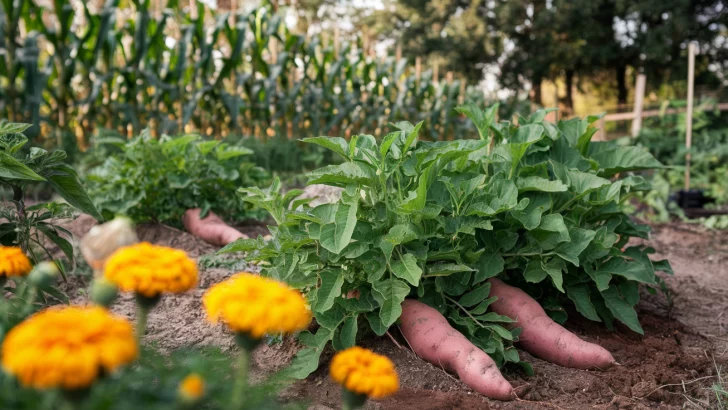Sweet potatoes don’t like to grow alone. Give them the right neighbors, and they’ll reward you with bigger, healthier harvests. Pick the wrong ones, and you might be stuck with stunted vines and struggling crops.
Some plants attract helpful pollinators, others keep pests away, and a few even improve the soil to help sweet potatoes thrive. The best part? Many of these companions are delicious in their own right, meaning you can grow a productive, pest-resistant garden while boosting your sweet potato yield.
Forget chemical sprays and complicated gardening tricks—nature already has the perfect planting partners. It’s just a matter of knowing which ones to invite.
Here are 21 companion plants that will help your sweet potatoes grow stronger, taste better, and produce a more abundant harvest.
Basil
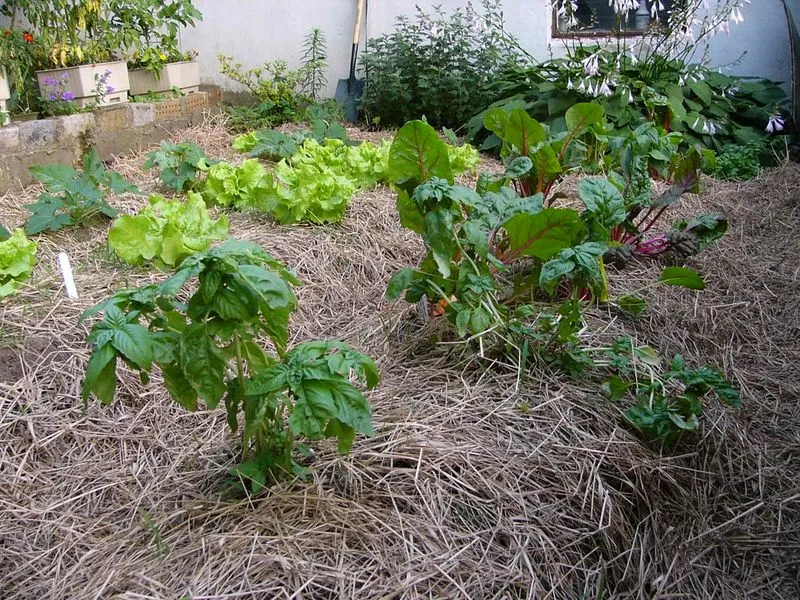
Basil isn’t just an herb; it’s a green phoenix rising from the ashes of culinary battles. Its leaves, a vibrant mosaic, are nature’s breath mints, veiling your garden in a perfume of peppery warmth.
Plant it amongst your sweet potatoes, and watch as it repels invaders like a leafy sentinel. Its aromatic oils are an olfactory fortress, keeping unwelcome pests at bay while inviting pollinators to a floral feast.
Basil, with its Mediterranean flair, turns your garden into a fragrant symphony, a verdant shield against the mundane world beyond.
Marigold
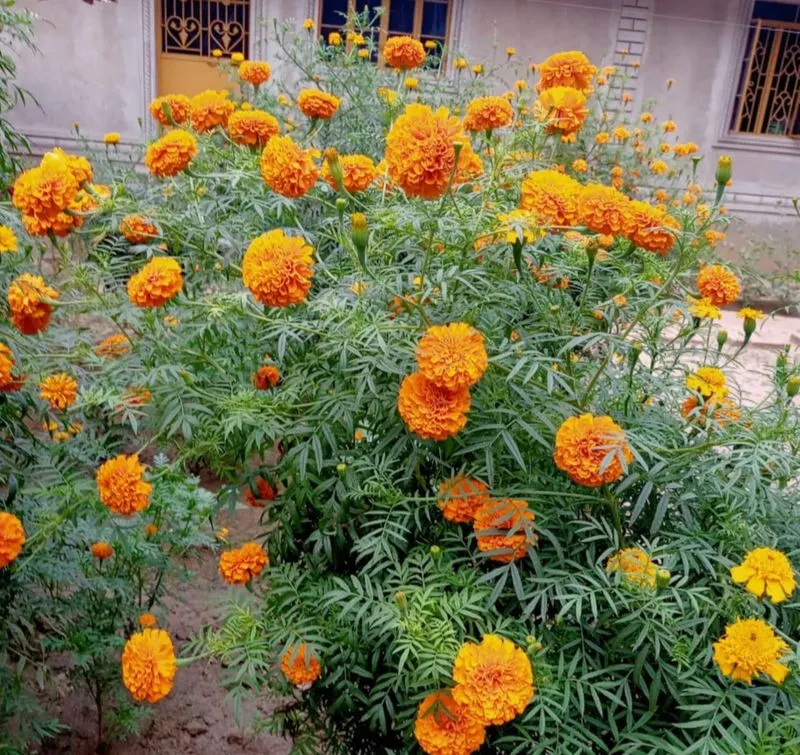
Marigolds are the golden warriors of the garden, their fiery blooms a symbol of resistance and rebirth. Each petal whispers tales of ancient sun gods, echoing warmth and protection.
As sweet potatoes dig deep into the soil, marigolds stand guard, their roots weaving a defensive web against nematodes. These flowers aren’t just ornamentals—they’re strategic allies in the garden’s grand scheme.
Planted alongside sweet potatoes, marigolds create a vibrant barricade, ensuring that every tuber matures in peace, shielded from the subterranean threats lying in wait.
Yarrow
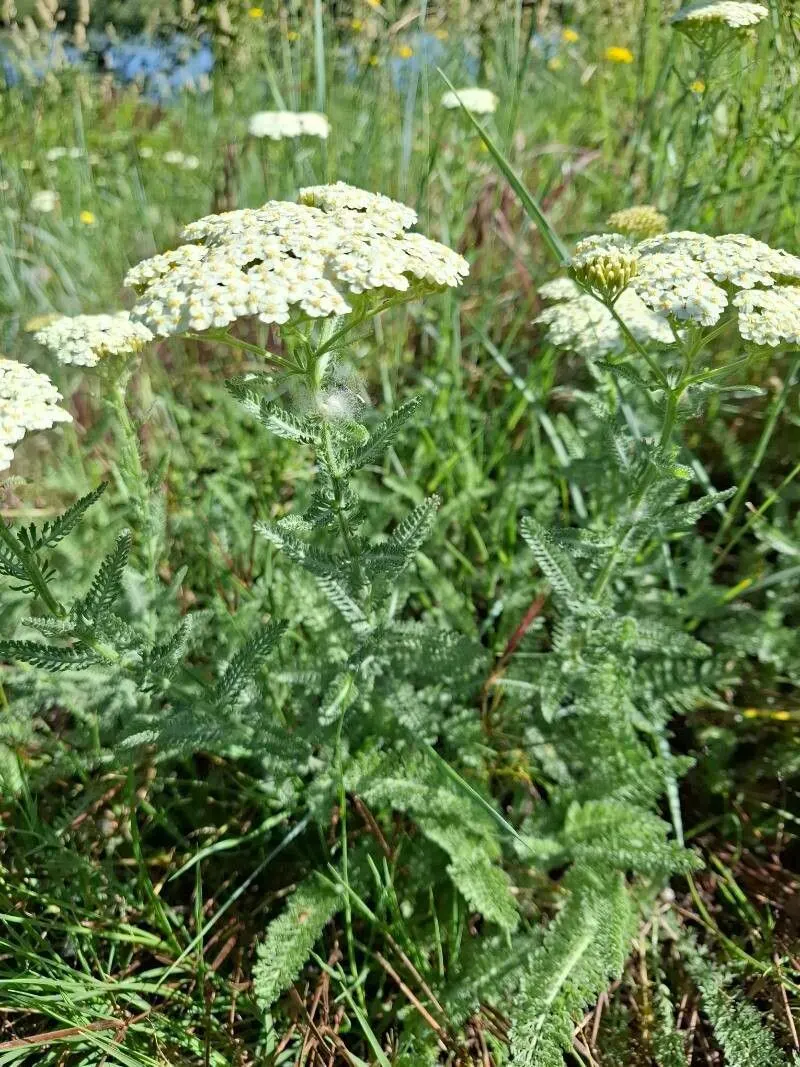
Yarrow, the herbal whisperer, bridges the gap between wild meadows and cultivated gardens. Its feathery fronds reach skyward, a testament to nature’s resilience.
Sweet potatoes find their courage in yarrow’s presence, as this medicinal marvel enhances essential oil production, making them more robust.
Yarrow’s history is steeped in legend, once believed to heal warriors’ wounds, and it now nurtures your garden’s warriors too. Planted near sweet potatoes, yarrow is more than a companion; it’s a guardian from antiquity, ensuring strength and vitality in every leaf.
Garlic
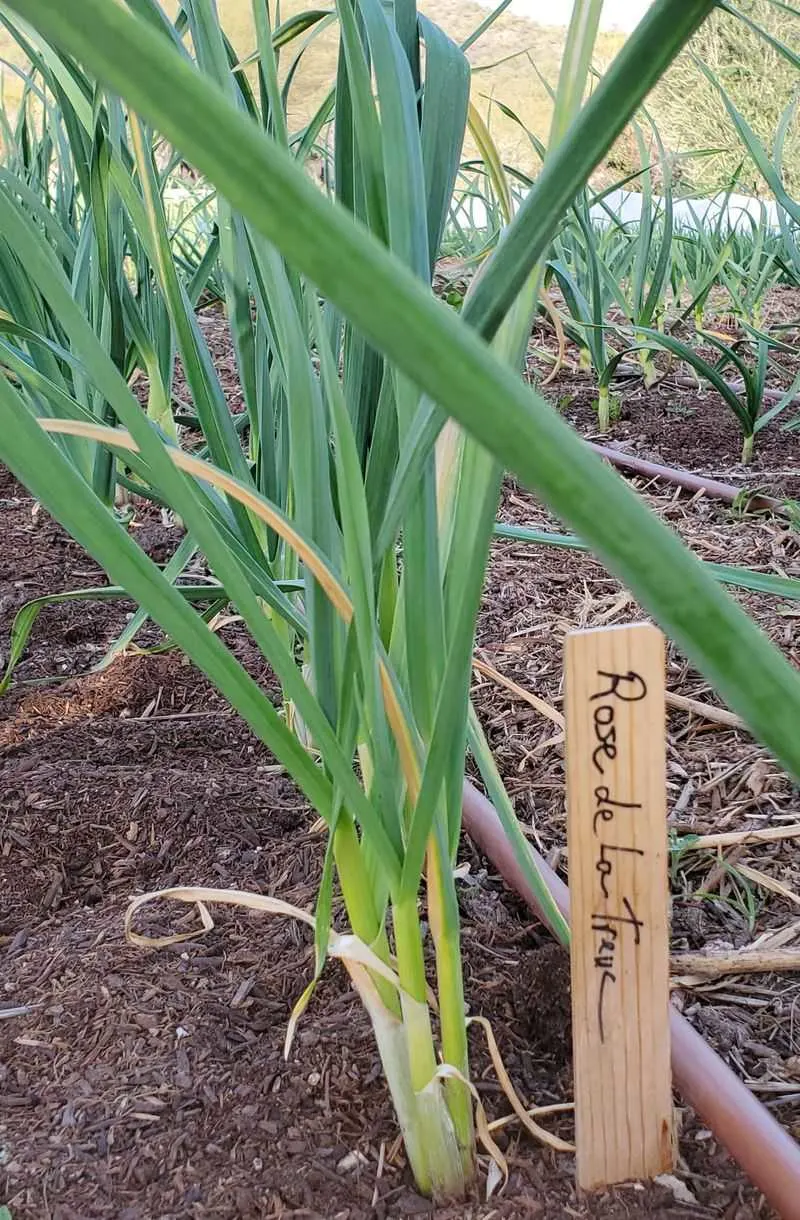
Garlic is the garden’s pungent protector, a bulbous beacon of strength and ancient wisdom. Its roots burrow into the soil, exuding an aroma that wards off pests with unwavering ferocity.
Planted near sweet potatoes, garlic becomes a silent sentinel, its pungent presence an invisible barrier against the creeping hordes.
Garlic isn’t just for the kitchen—it’s a symbol of vitality and defense, a testament to the age-old axiom that strength comes from below. This bulb is more than a companion; it’s a guardian angel in earthy form.
Beans
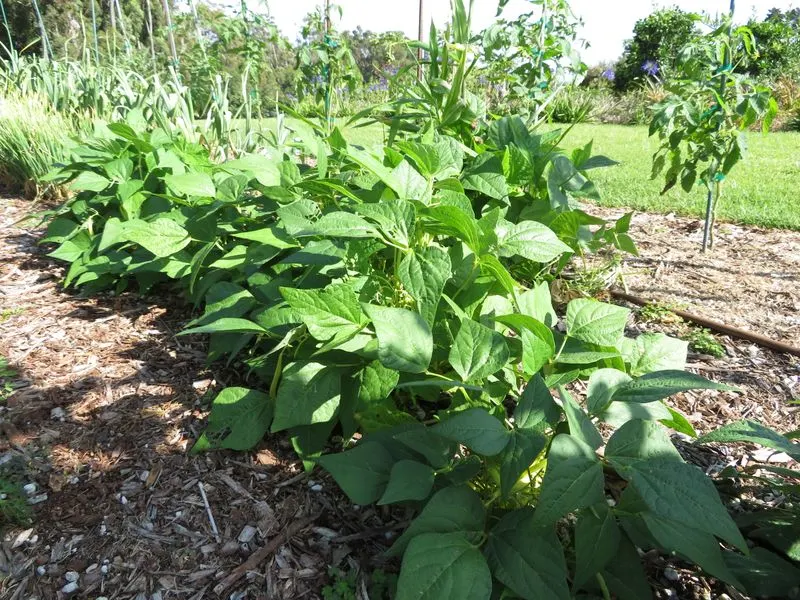
Beans, the leguminous lifeblood of gardens, are nature’s tireless alchemists. Their roots, like botanical magicians, trap nitrogen, transforming it into vital nourishment for sweet potatoes.
As these tender tendrils wrap around their supports, they create a living tapestry—a partnership of growth and sustenance.
Beans whisper secrets of symbiosis, where the earth’s bounty is shared, not hoarded. This green alliance is a dance of mutual benefit, each plant flourishing in the other’s shadow. Together, they craft a narrative of cooperation, a testament to the power of nature’s interconnected web.
Thyme
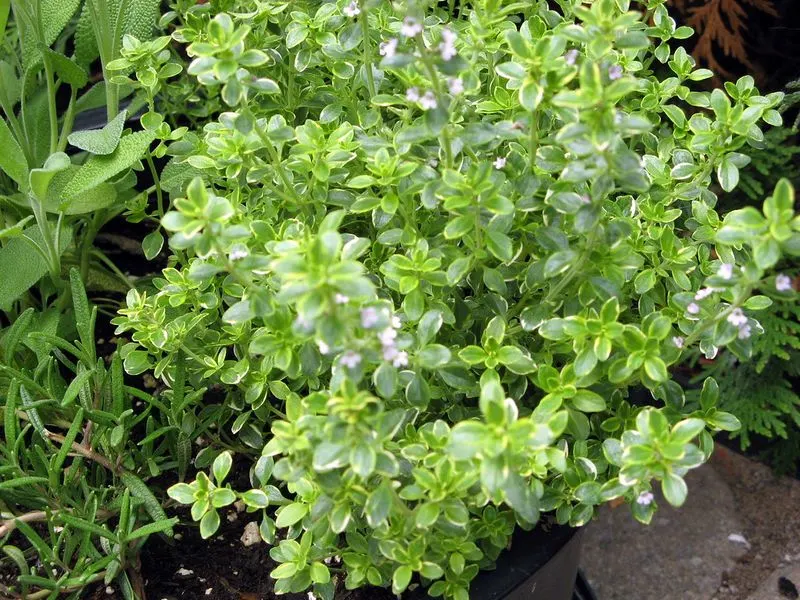
Thyme is the garden’s diminutive dynamo, a low-growing legend with a scent of lemony earthiness. Its presence is subtle yet profound, weaving an aromatic tapestry among the sweet potatoes.
This herb is more than seasoning—it’s a tale of resilience, repelling pests with its fragrant embrace. Thyme’s oils are a natural deterrent, safeguarding sweet potatoes from the shadows lurking beneath the soil.
Plant it generously, and watch as its mythic qualities transform your garden into a fortress, where each breath of thyme-infused air is a promise of protection and vitality.
Borage
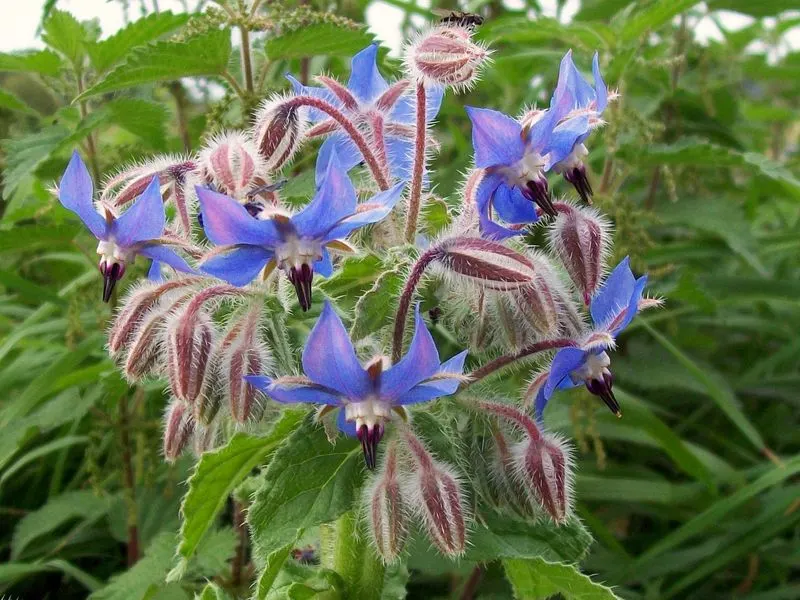
Borage, with its starry blue blooms, is the garden’s celestial storyteller. Each flower is a burst of cosmic charm, a beckoning call to the pollinators of the world.
Amidst sweet potatoes, borage becomes a beacon, drawing in bees and butterflies to its nectar-rich embrace. Its leaves, rough like forgotten myths, lay the groundwork for a thriving ecosystem.
This plant is more than a companion—it’s an invitation to biodiversity, a vibrant connection between earth and sky. Borage transforms the garden into a stage where nature’s drama unfolds in every petal.
Nasturtium
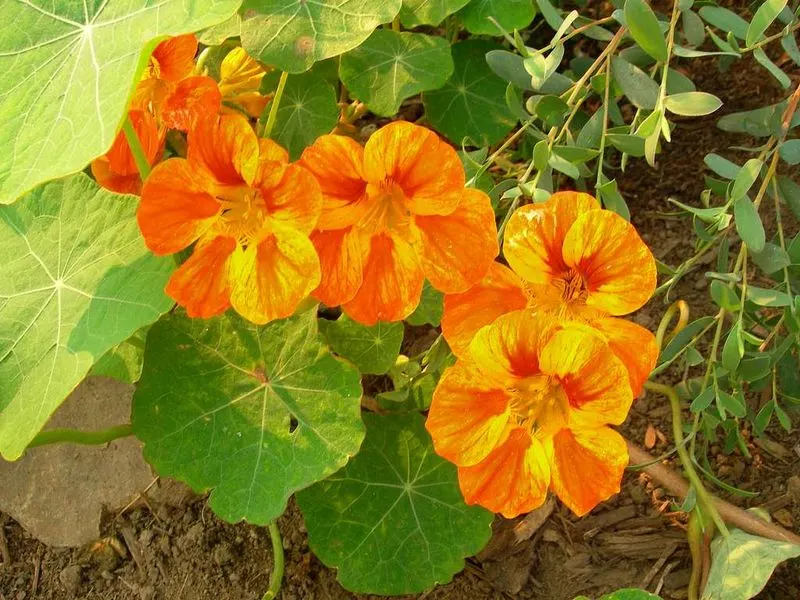
Nasturtium, the garden’s bold artist, spills color like paint onto the canvas of earth. Its flowers, a riotous bouquet of fiery hues, entice with both beauty and utility.
As sweet potatoes weave their way through the soil, nasturtium stands as a verdant ally, repelling pests with its peppery edge. Its leaves, broad and round, form a protective carpet, nurturing the ground with every inch.
This vibrant companion is more than decoration—it’s a living shield, a reminder that beauty and function dance hand in hand in nature’s masterpiece.
Dill
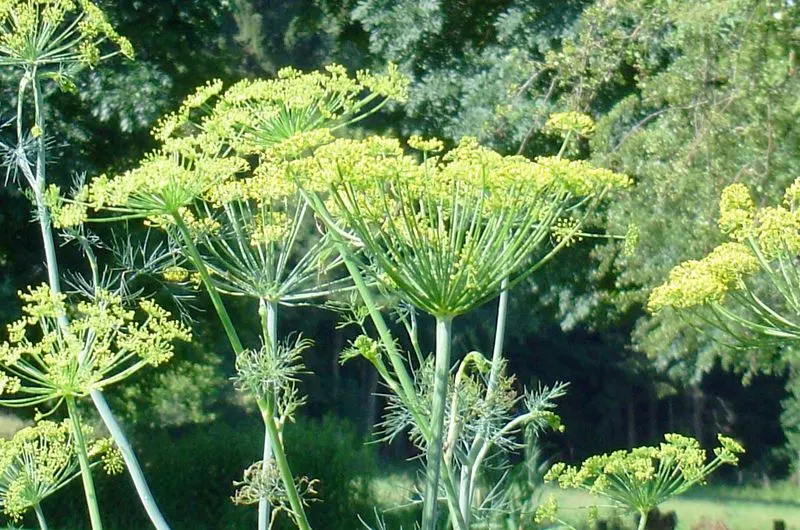
Dill is the garden’s aromatic improviser, its feathery fronds swaying like jazz notes in the breeze. This herb, though delicate, holds the power to summon beneficial insects to its side.
Sweet potatoes find a companion in dill’s fragrant presence, as it wards off unwanted guests with its distinct aroma.
In the culinary world, dill speaks of pickles and preserves, but in the garden, it’s a guardian of growth and harmony. This plant is more than a garnish—it’s a maestro conducting a symphony of sustenance and protection.
Cilantro
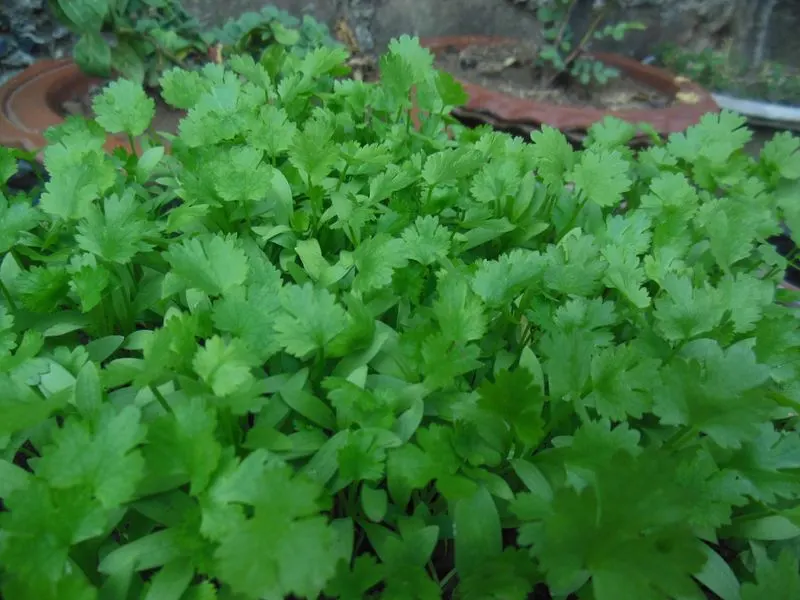
Cilantro, the zesty herald of the herb world, infuses gardens with its vibrant, citrusy aroma. Its leaves dance in the sunlight, a green banner proclaiming vitality and flavor.
Near sweet potatoes, cilantro becomes a living curtain, drawing beneficial insects while deterring those who seek to harm.
Beyond its culinary fame, cilantro is a symbol of life’s zest, a reminder that resilience comes in many forms. This plant, with its vibrant personality, is more than a garnish—it’s a vibrant ally in the garden’s ongoing saga of growth.
Chives
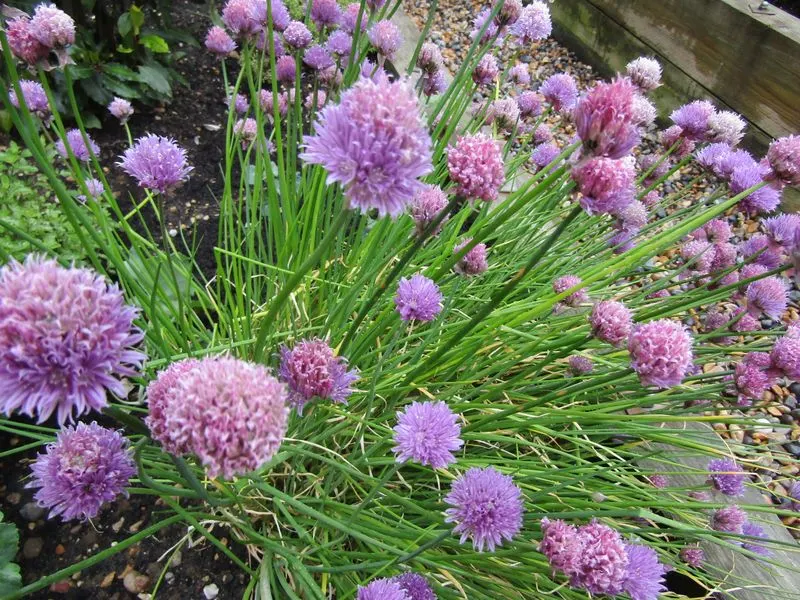
Chives, with their slender stalks and lavender blooms, are the garden’s aromatic architects. They rise like whispers of flavor, their presence both subtle and profound.
Around sweet potatoes, chives form a fragrant barrier, repelling pests with an oniony embrace. Their flowers are not just pretty—they’re powerhouses of protection, drawing pollinators into their floral embrace.
Chives are more than a garnish on your plate; they’re a testament to the strength in simplicity. In their unassuming elegance, they become guardians of growth, ensuring your garden thrives.
Oregano
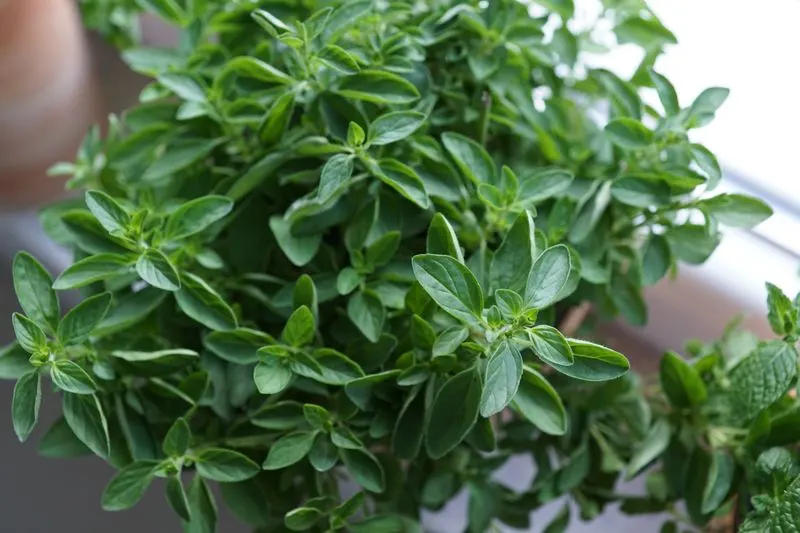
Oregano is the garden’s earthy oracle, its leaves whispering tales of Mediterranean sun and age-old myths. This herb infuses the air with a robust aroma, a fragrant shield against the garden’s adversaries.
Planted with sweet potatoes, oregano becomes a companion of fortitude, its oils a natural deterrent to pests.
Beyond the kitchen, oregano stands as a symbol of protection and resilience, a reminder that strength often comes with a subtle touch. In the garden, it’s more than a herb—it’s a storyteller weaving a tale of vitality and defense.
Radishes
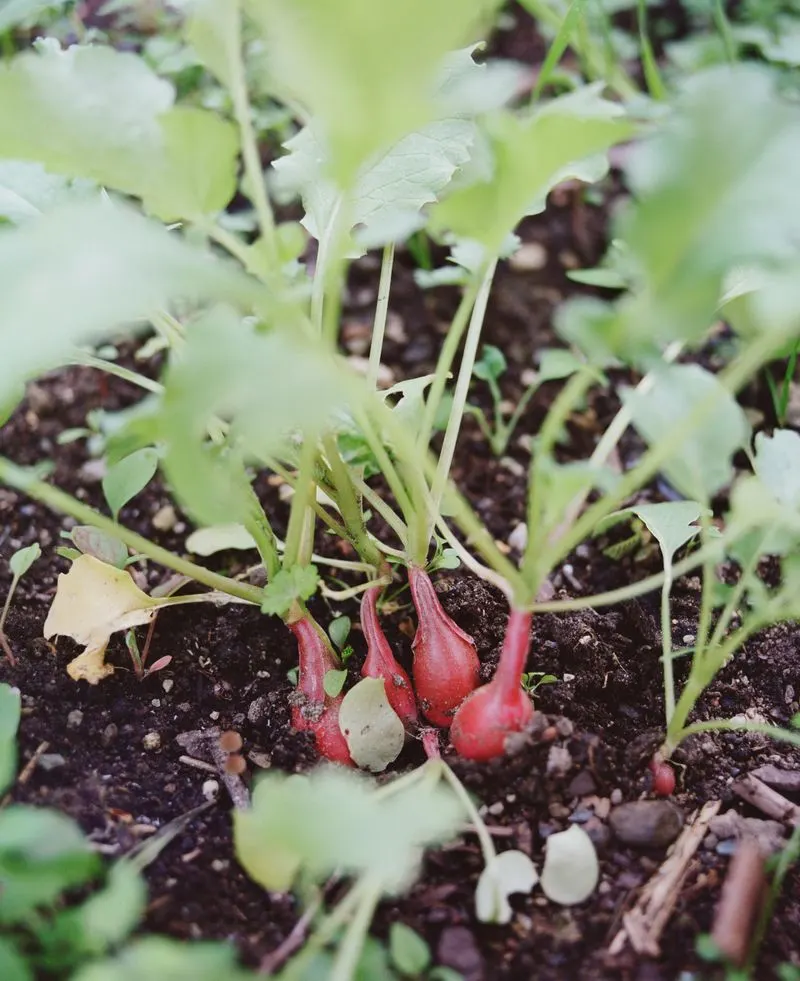
Radishes, the fiery gems of the garden, burst forth with a flavor as bold as their color. Their roots dig deep, creating a subterranean network that aerates the soil for sweet potatoes.
As they mature, these spicy spheres deter pests, their presence a natural repellent for soil-dwelling threats.
Radishes are more than a salad accent—they’re a testament to the power of partnerships, where their rapid growth benefits both garden and gardener. In the world of horticulture, radishes stand as pioneers, paving the way for bountiful harvests.
Sunflowers
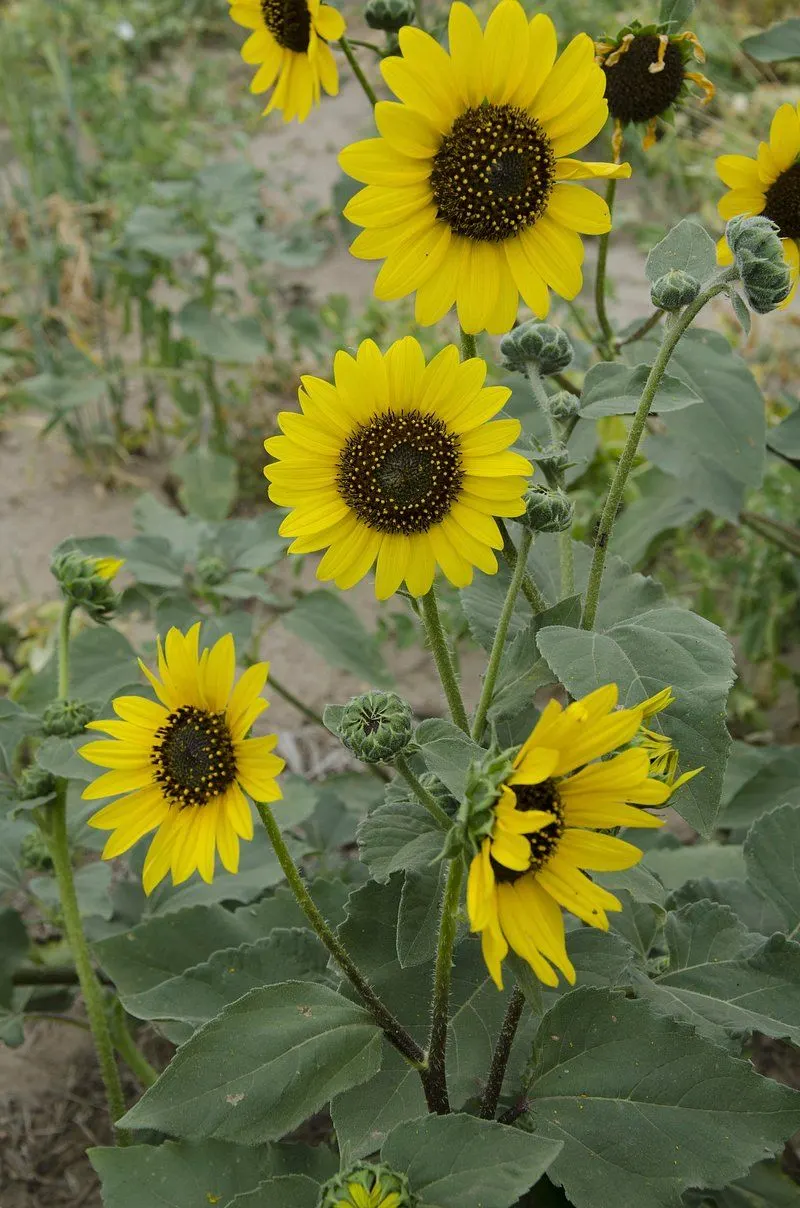
Sunflowers, the garden’s radiant sentinels, stretch skyward with a vigor that mirrors the sun’s own journey. Their towering stalks and golden faces spin tales of optimism and abundance.
Beside sweet potatoes, sunflowers create a living fence, providing shade and windbreaks while their roots stabilize the soil.
These blooms are more than decorative giants—they’re beacons of vitality, attracting pollinators with their vibrant allure. Sunflowers embody the garden’s spirit, a living testament to the power of nature’s light, guiding every leaf and tuber to reach for the skies.
Cabbage
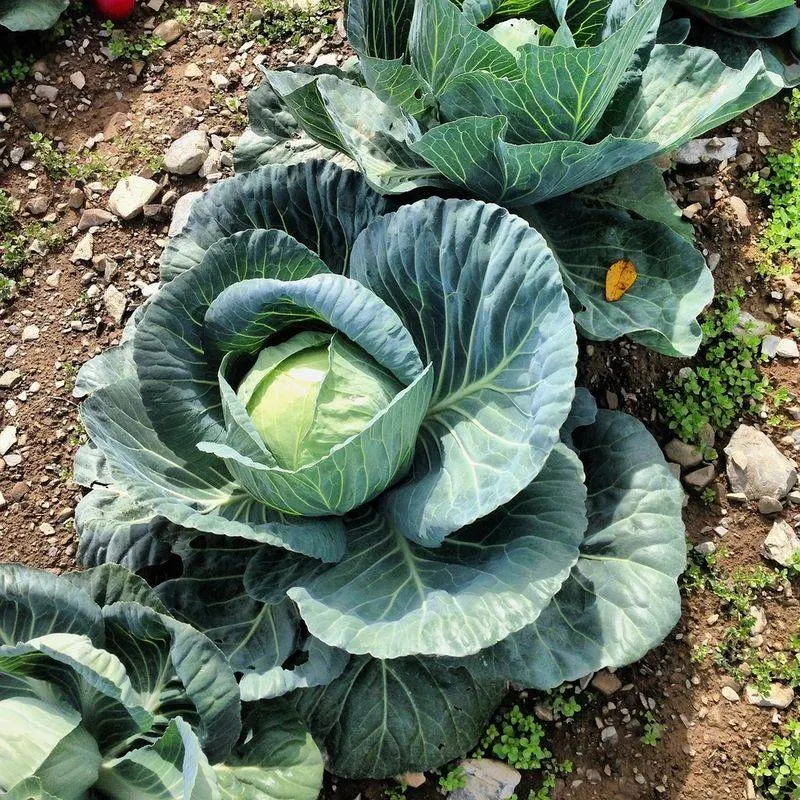
Cabbage, with its layered leaves, is the garden’s armored guardian, a symbol of strength and sustenance. Its presence is a testament to the resilience required to thrive in challenging climates.
Among sweet potatoes, cabbage forms a leafy barricade, shielding them from harsh winds and pests alike.
This vegetable is more than a side dish—it’s a living testament to the harmony of plant partnerships, where each leaf is a shield and each root a support. In the garden’s grand narrative, cabbage stands as a stalwart sentinel, ensuring stability and growth.
Spinach
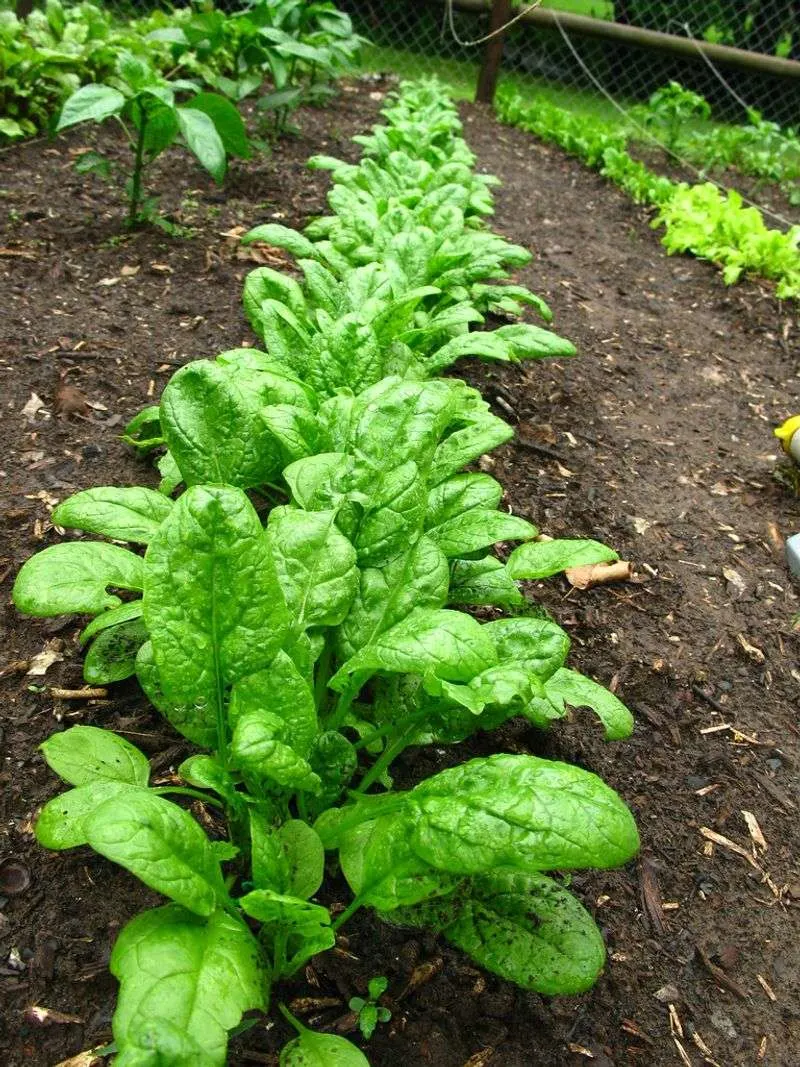
Spinach, with its lush, leafy allure, is the garden’s emerald warrior, a symbol of freshness and vitality. Its leaves, rich in nutrients, create a verdant carpet that blankets the earth.
Near sweet potatoes, spinach acts as a living mulch, suppressing weeds while conserving moisture in the soil.
This leafy green is more than a salad staple—it’s a testament to the garden’s cycle of growth and renewal. Spinach embodies the principle of abundance, ensuring that every plant in its vicinity flourishes with vigor and health.
Carrots
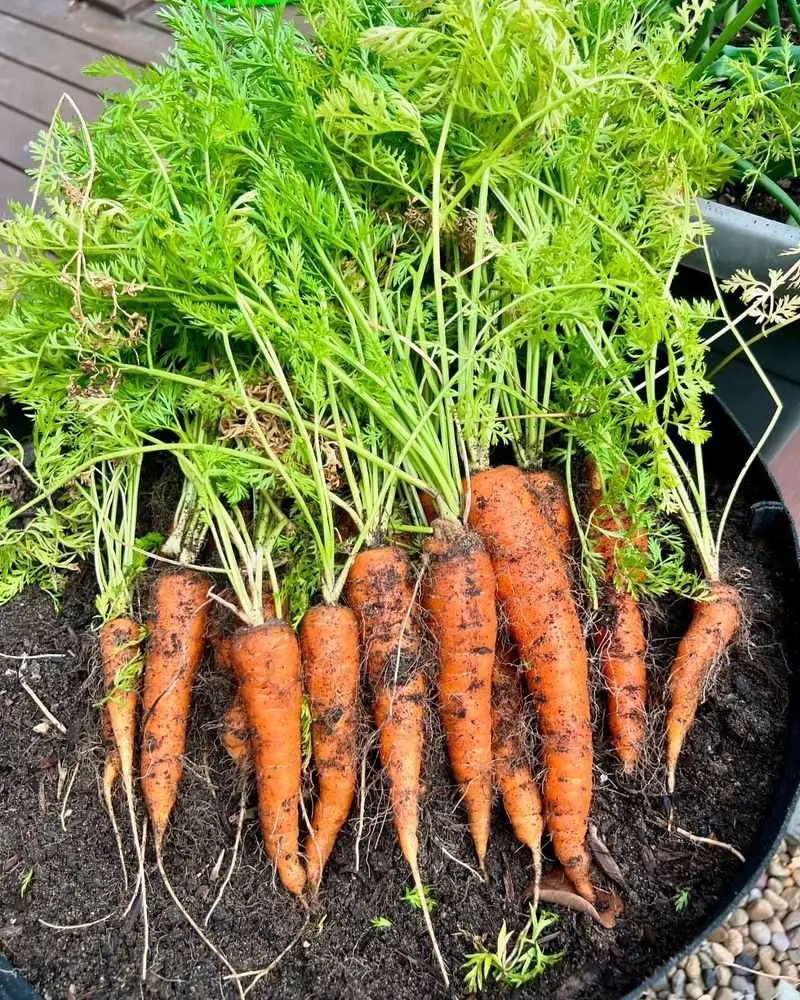
Carrots, with their vibrant roots and feathery tops, are the garden’s underground pioneers, delving deep into the earth. Their presence is a testament to the art of aeration, loosening the soil for sweet potatoes.
As they grow, carrots draw nutrients from the depths, enriching the garden’s ecosystem.
These roots are more than culinary staples—they’re living proof of the power of nature’s partnership, where every root and leaf plays a pivotal role. In the garden’s intricate dance, carrots are both dancers and choreographers, ensuring harmony beneath the soil.
Mint
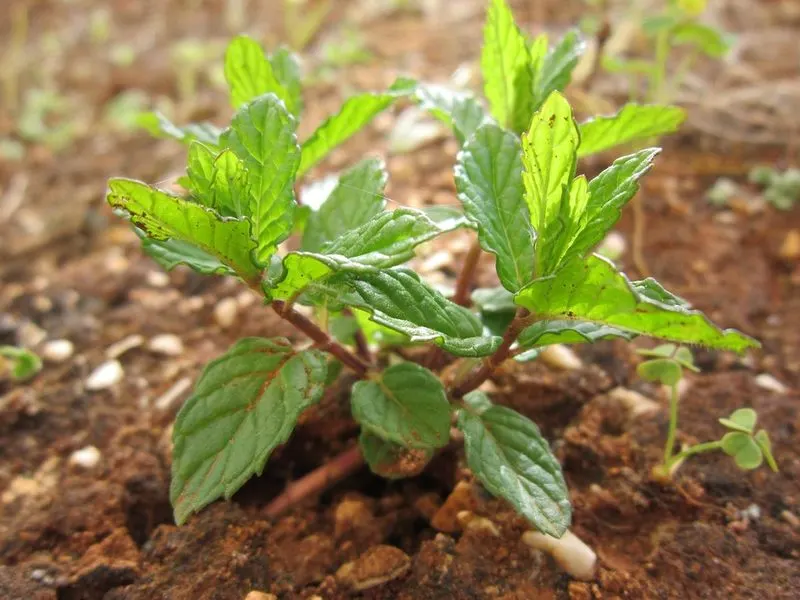
Mint, the garden’s aromatic alchemist, transforms the air with its refreshing, invigorating scent. Its leaves, a symphony of green, offer a fragrant fortress against pests.
Near sweet potatoes, mint becomes a vibrant defensive line, its oils a natural repellent for unwelcome insects.
Beyond its culinary charm, mint is a symbol of refreshment and renewal, a reminder of nature’s power to rejuvenate. This plant is more than a garnish—it’s a protector, ensuring that your garden remains a haven of growth and vitality.
Lettuce
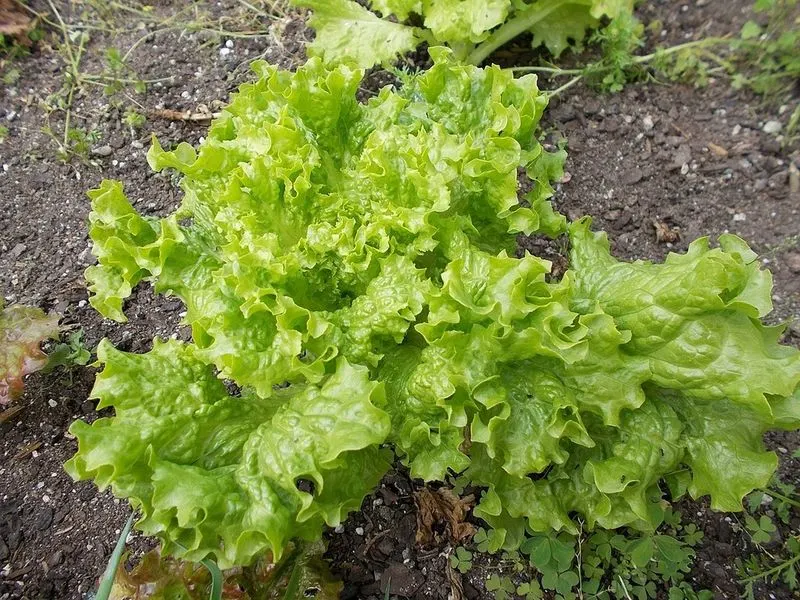
Lettuce, with its crisp leaves and gentle curves, is the garden’s green embrace, a symbol of simplicity and abundance. Its presence is a gentle reminder of the power of tranquility.
Near sweet potatoes, lettuce acts as a natural mulch, conserving moisture and shading out weeds.
This leafy green is more than a salad essential—it’s a testament to the harmony of nature’s cycles, where every leaf contributes to the garden’s overall health. In the tapestry of horticulture, lettuce offers both nourishment and protection, ensuring a bountiful harvest.
Peas
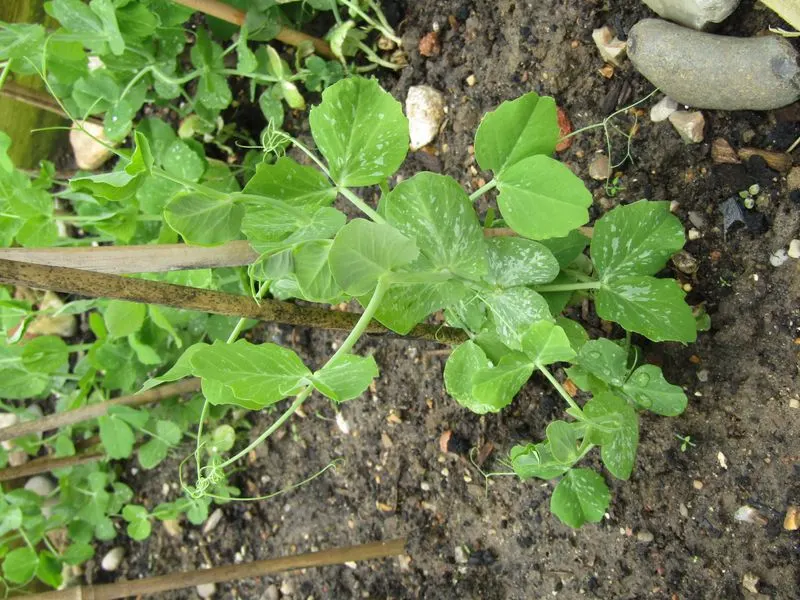
Peas, with their delicate tendrils and vibrant pods, are the garden’s climbers, reaching for the sky. Their presence is a testament to the power of growth and cooperation.
Among sweet potatoes, peas fix nitrogen in the soil, enriching the earth with essential nutrients.
These pods are more than a tasty treat—they’re symbols of partnership, where each plant supports the other in a complex dance of mutual benefit. In the garden’s ecosystem, peas play a vital role, ensuring every root and leaf thrives with vigor and vitality.
Beets
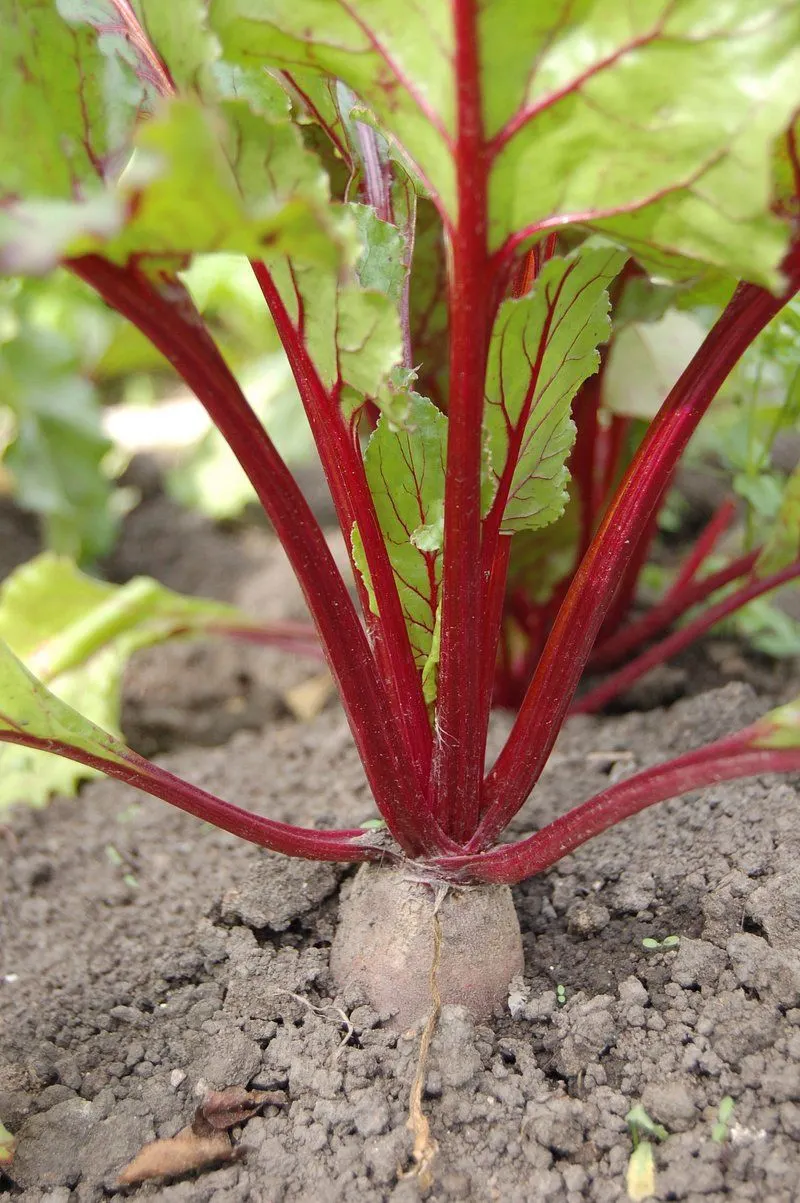
Beets, with their deep red roots and verdant tops, are the garden’s colorful alchemists, turning sunlight into sustenance. Their roots delve deep, drawing nutrients that benefit their sweet potato neighbors.
Beets add a splash of color and vitality, their presence a natural deterrent to pests.
These roots are more than a culinary delight—they’re a testament to the garden’s intricate web of relationships, where each plant plays a crucial role. In the dance of the garden, beets are both performers and stagehands, ensuring a thriving ecosystem for all.

